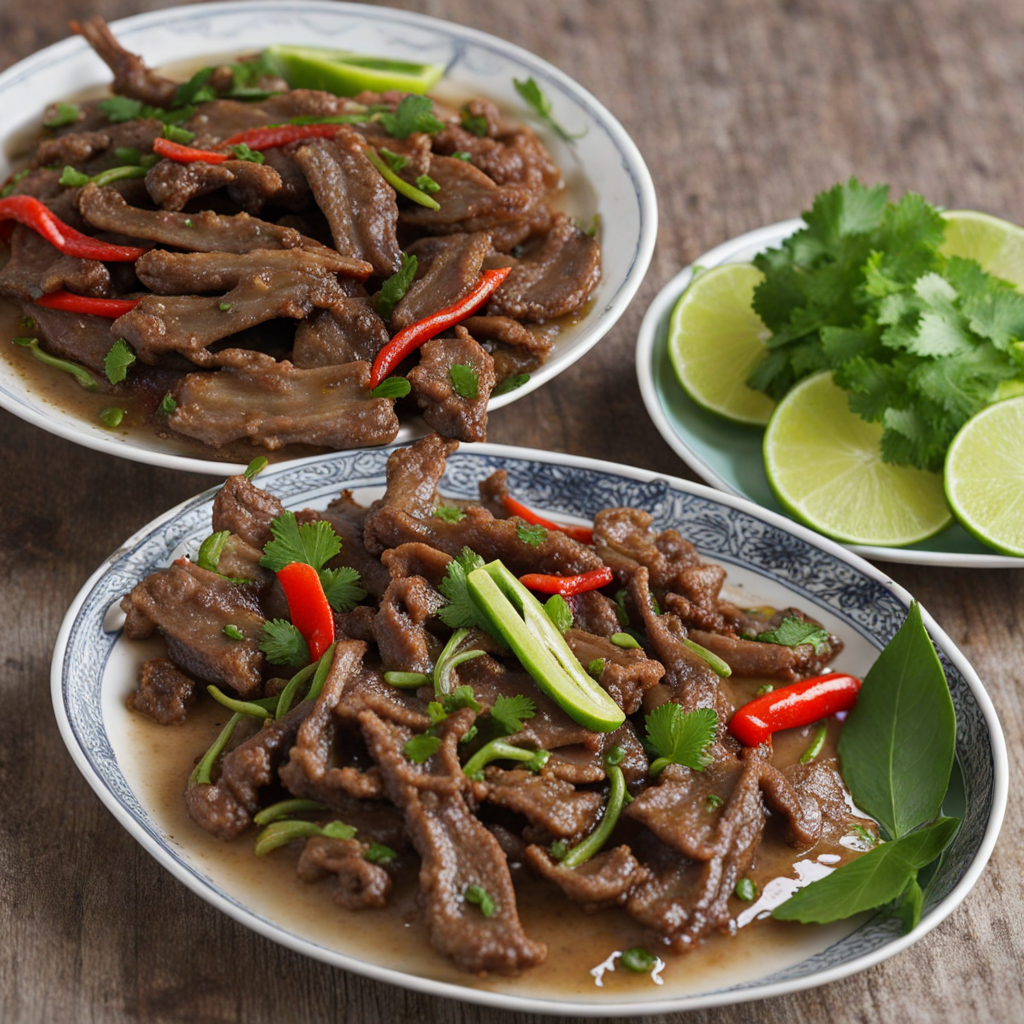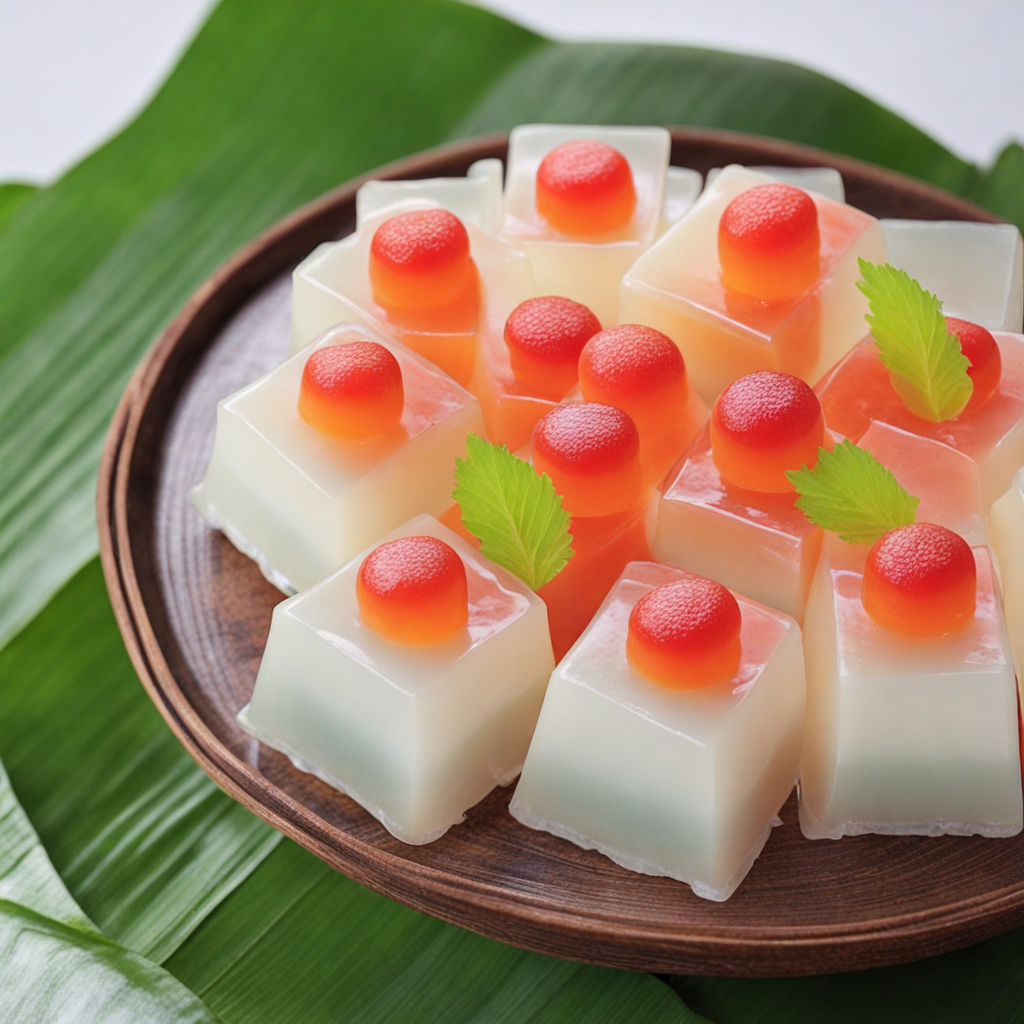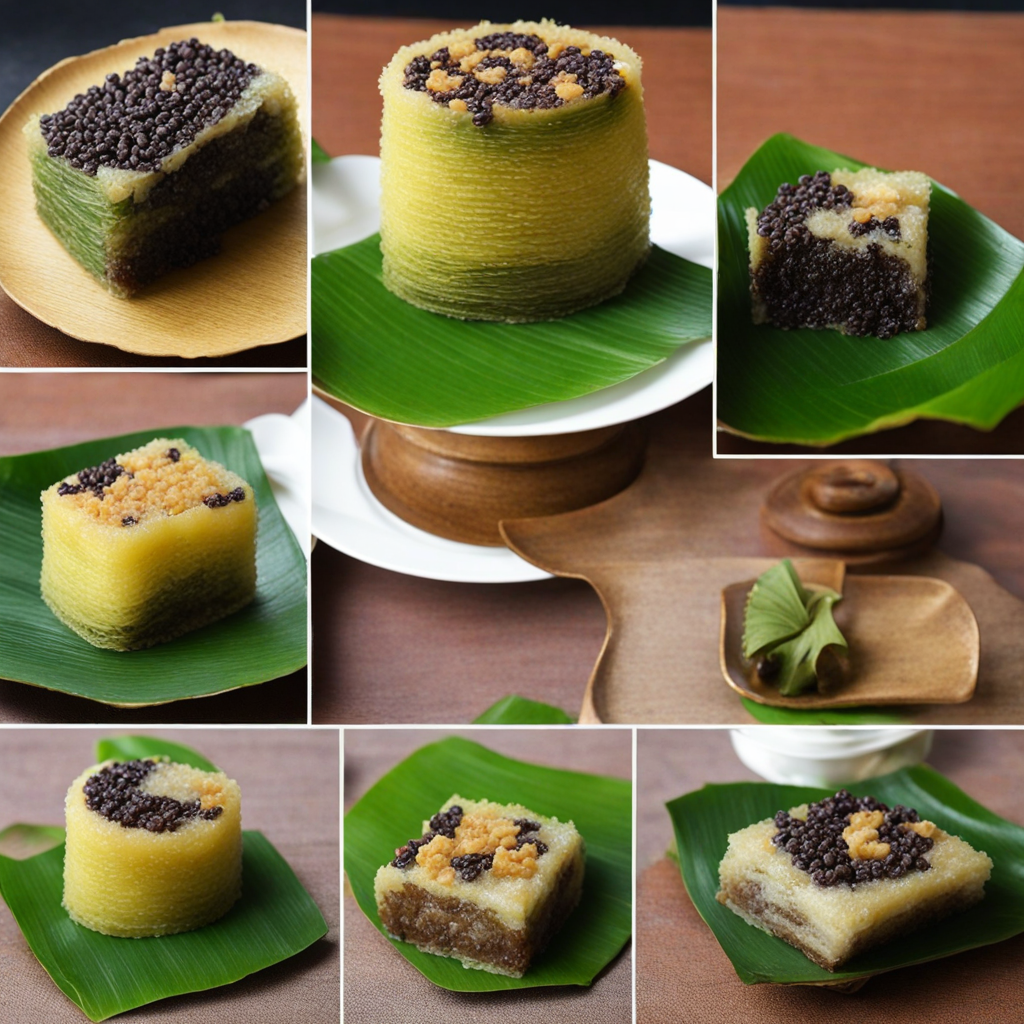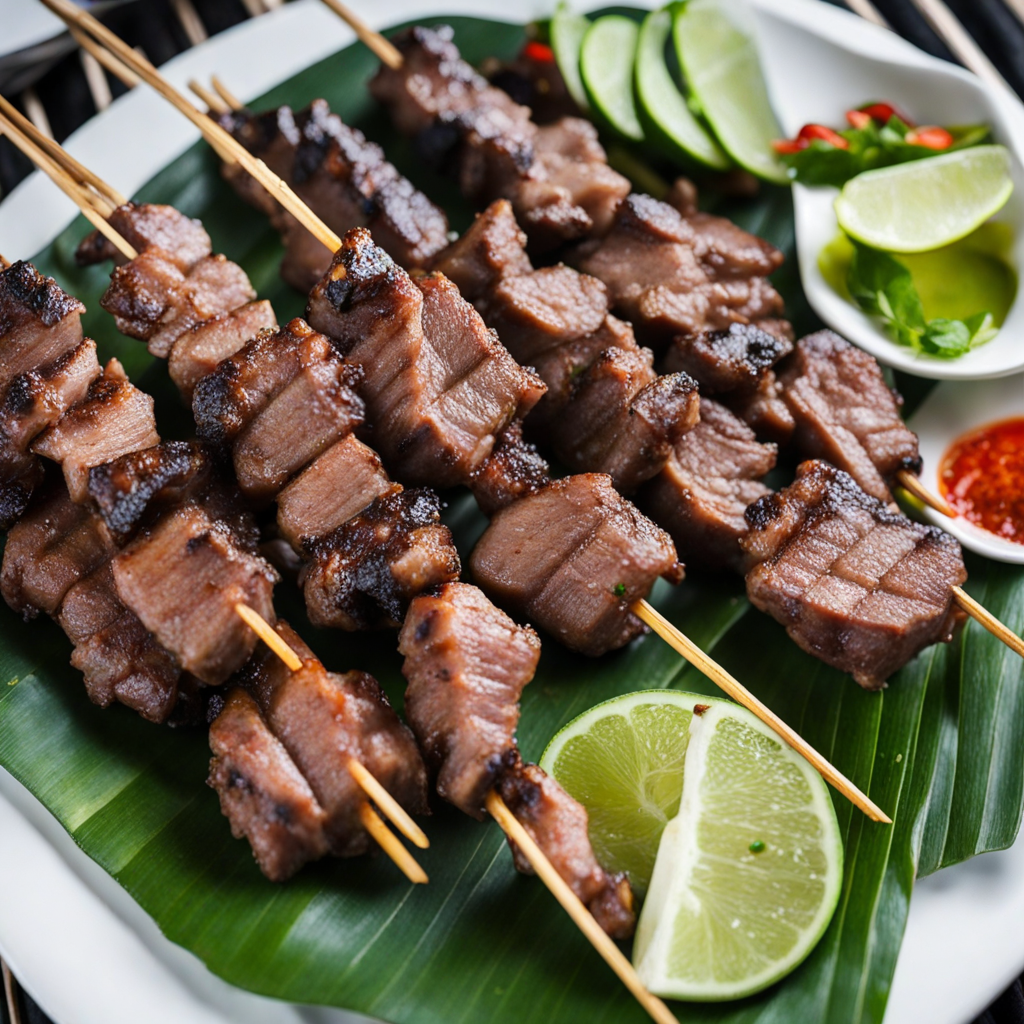Lok Lak
Lok Lak is a traditional Cambodian dish that showcases the rich flavors of the region through its simple yet vibrant ingredients. At its core, Lok Lak consists of marinated beef, often tender cuts such as sirloin or flank steak, which are seasoned with a mix of black pepper, garlic, and slightly sweet soy sauce. The meat is then stir-fried until it reaches a perfect balance of tenderness and flavor, creating a savory base that is both hearty and satisfying. The use of fresh, local produce enhances the dish, as it is typically served with a side of crisp lettuce, tomatoes, cucumbers, and sometimes a fried egg, adding freshness and a pop of color to the plate. Accompanying the beef is a unique dipping sauce made from lime juice and black pepper, which elevates the dish with its bright acidity and pungent spice. Diners are encouraged to dip pieces of the tender beef into this zesty sauce, creating a delightful contrast to the rich flavors of the meat. The combination of the juicy beef and the tangy sauce creates an explosion of taste that is both satisfying and refreshing, making every bite an adventure for the palate. Lok Lak is often served with steamed rice, which acts as a perfect canvas to soak up the delicious juices from the beef and sauce. The dish is not only a staple in Cambodian households but also a popular item in restaurants, symbolizing the warmth and hospitality of Cambodian culture. As you indulge in Lok Lak, you will experience the harmonious blend of flavors that reflects the country's culinary heritage, making it a must-try for anyone looking to explore the diverse tastes of Cambodian cuisine.
How It Became This Dish
The History of Lok Lak: A Culinary Treasure of Cambodia Origins and Early History Lok Lak, a beloved Cambodian dish, is a stir-fried beef dish characterized by its tender meat, vibrant flavors, and unique serving style. The origins of Lok Lak can be traced back to the Khmer Empire, which flourished from the 9th to the 15th centuries. The empire, known for its grand temples and advanced civilization, was a melting pot of cultures, which significantly influenced its cuisine. The term "Lok Lak" itself derives from the French word "loc lac," which means "tossed" or "to shake." This influence hints at the colonial period in Cambodia when French cuisine began to weave itself into the fabric of local food culture. The French colonial rule from the late 19th century to the mid-20th century introduced new ingredients and cooking techniques that melded with traditional Khmer practices. Lok Lak, in its contemporary form, is a result of this culinary fusion, showcasing the adaptability of Khmer cuisine throughout history. Cultural Significance Lok Lak holds a special place in Cambodian culture, embodying the warmth of home cooking and communal dining. Traditionally, it is made with marinated beef, often tenderized through a combination of soy sauce, oyster sauce, and black pepper, which gives it a distinct flavor profile. The dish is usually served with a side of rice, a fresh salad of cucumbers and tomatoes, and a lime dipping sauce made with salt and pepper. The simplicity of its ingredients belies the depth of its flavor, making Lok Lak a favorite among locals and tourists alike. In Cambodian society, food is not just sustenance; it is a means of bringing people together. Families often share meals, and Lok Lak is a popular choice for gatherings and celebrations. Its preparation and consumption can foster connections, making it a dish that signifies hospitality and togetherness. The presentation, often served on a sizzling platter, adds to the communal experience, inviting diners to engage with the food directly. Development Over Time As Cambodia has evolved, so too has Lok Lak. While the core of the dish remains consistent, regional variations and adaptations have emerged. In urban centers like Phnom Penh and Siem Reap, Lok Lak can be found in street food stalls, casual eateries, and upscale restaurants, each offering their unique twist on the classic recipe. In the countryside, Lok Lak is often made with locally sourced ingredients, highlighting the importance of fresh produce in Khmer cooking. The use of beef is prevalent, but variations may include chicken, pork, or even tofu, catering to the diverse preferences of Cambodians and visitors. This flexibility showcases Lok Lak's ability to adapt to changing tastes and dietary requirements, ensuring its continued popularity. The globalization of food culture has also influenced Lok Lak. As Cambodia has opened its doors to international tourism and trade, chefs have experimented with new flavors and techniques, incorporating elements from neighboring cuisines like Thai and Vietnamese, as well as Western influences. These adaptations can be seen in the use of different marinades, cooking methods, and presentation styles, further enriching the dish's legacy. The Modern Era In the 21st century, Lok Lak has gained international recognition, becoming a symbol of Cambodian cuisine on the global stage. Food enthusiasts and travelers seeking authentic culinary experiences in Southeast Asia often seek out Lok Lak as a must-try dish. This increased interest has prompted local chefs to preserve the dish's traditional roots while also embracing innovation. Cooking classes and food tours have proliferated, allowing visitors to learn how to make Lok Lak from scratch, deepening their appreciation for the dish and its significance in Cambodian culture. These experiences not only promote culinary tourism but also support local economies, empowering communities to share their culinary heritage with the world. Furthermore, the rise of social media has played a pivotal role in the promotion of Lok Lak. Platforms like Instagram and TikTok have enabled food bloggers and travelers to share their experiences, showcasing the dish's vibrant colors and captivating presentation. This visual appeal has attracted a younger audience, eager to explore the rich flavors of Cambodian cuisine. Challenges and Preservation Despite its popularity, Lok Lak and other traditional Cambodian dishes face challenges in the modern era. Urbanization, globalization, and changing lifestyles have led to a decline in the consumption of traditional foods. Younger generations may gravitate towards fast food and convenience meals, putting the future of traditional dishes at risk. However, efforts are being made to preserve and promote Cambodian culinary traditions. Organizations focused on gastronomy are working to document traditional recipes, train chefs in classic cooking techniques, and raise awareness about the importance of cultural food heritage. By promoting Lok Lak and other dishes, these initiatives aim to ensure that future generations appreciate and continue the culinary legacy of Cambodia. Conclusion Lok Lak is more than just a dish; it is a representation of Cambodia's rich culinary history, cultural significance, and resilience. The journey of Lok Lak from its ancient roots to contemporary interpretations reflects the evolution of Cambodian society and its ability to adapt while honoring its traditions. As it continues to captivate the palates of locals and visitors alike, Lok Lak stands as a testament to the enduring spirit of Khmer cuisine and the importance of food as a connector of people and cultures. Whether enjoyed at a bustling street stall or a family gathering, Lok Lak remains a cherished culinary treasure, emblematic of the warmth and hospitality that defines Cambodian culture.
You may like
Discover local flavors from Cambodia







